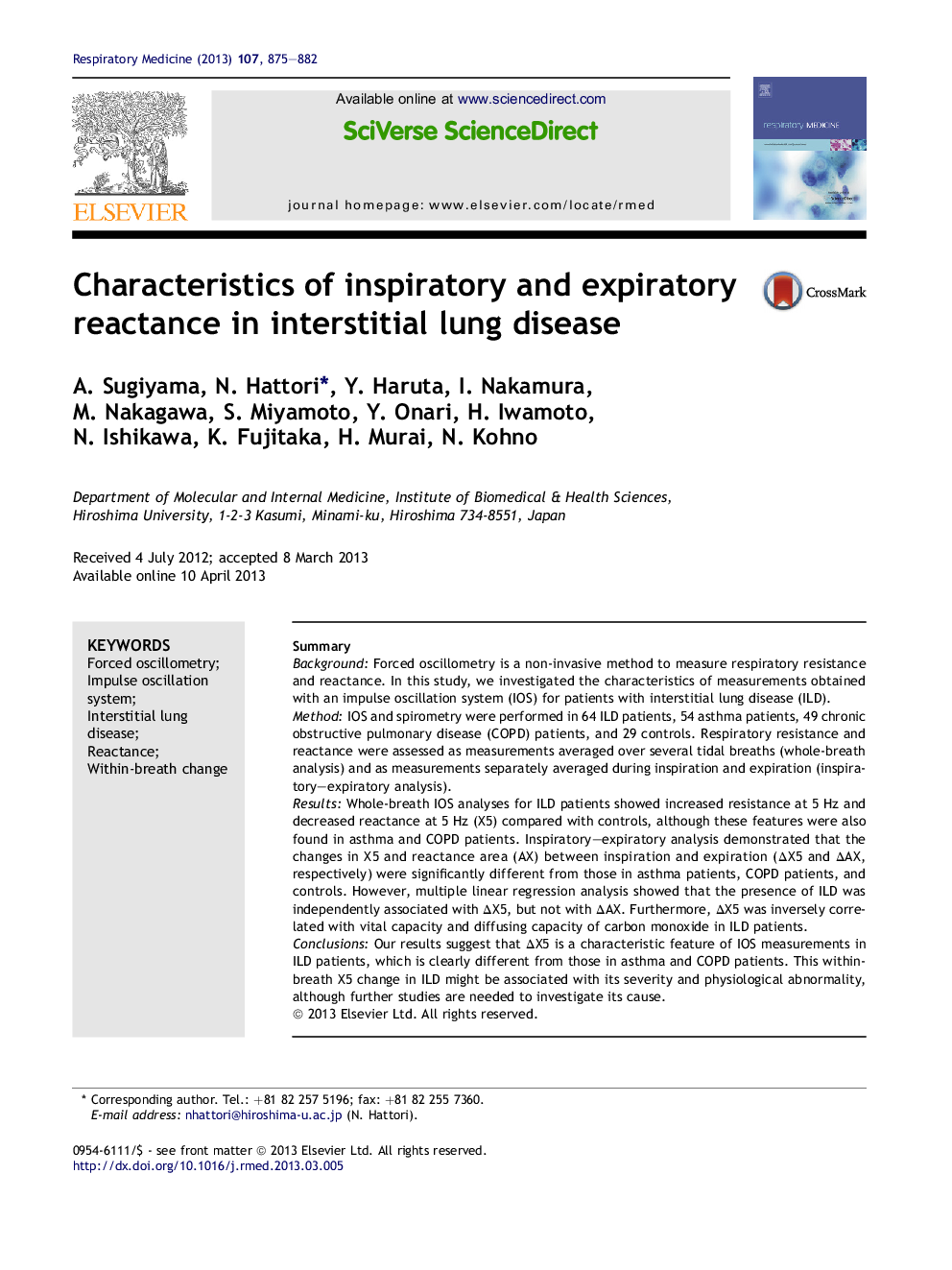| Article ID | Journal | Published Year | Pages | File Type |
|---|---|---|---|---|
| 4210490 | Respiratory Medicine | 2013 | 8 Pages |
SummaryBackgroundForced oscillometry is a non-invasive method to measure respiratory resistance and reactance. In this study, we investigated the characteristics of measurements obtained with an impulse oscillation system (IOS) for patients with interstitial lung disease (ILD).MethodIOS and spirometry were performed in 64 ILD patients, 54 asthma patients, 49 chronic obstructive pulmonary disease (COPD) patients, and 29 controls. Respiratory resistance and reactance were assessed as measurements averaged over several tidal breaths (whole-breath analysis) and as measurements separately averaged during inspiration and expiration (inspiratory–expiratory analysis).ResultsWhole-breath IOS analyses for ILD patients showed increased resistance at 5 Hz and decreased reactance at 5 Hz (X5) compared with controls, although these features were also found in asthma and COPD patients. Inspiratory–expiratory analysis demonstrated that the changes in X5 and reactance area (AX) between inspiration and expiration (ΔX5 and ΔAX, respectively) were significantly different from those in asthma patients, COPD patients, and controls. However, multiple linear regression analysis showed that the presence of ILD was independently associated with ΔX5, but not with ΔAX. Furthermore, ΔX5 was inversely correlated with vital capacity and diffusing capacity of carbon monoxide in ILD patients.ConclusionsOur results suggest that ΔX5 is a characteristic feature of IOS measurements in ILD patients, which is clearly different from those in asthma and COPD patients. This within-breath X5 change in ILD might be associated with its severity and physiological abnormality, although further studies are needed to investigate its cause.
